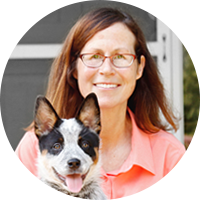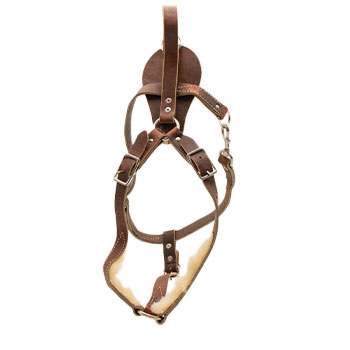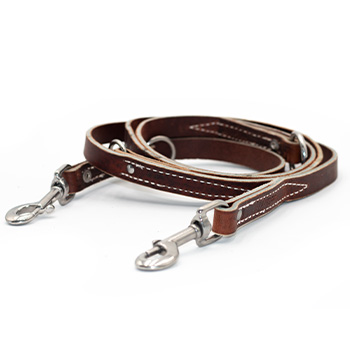May 17, 2011
I am a military dog handler on active duty. My service dog becomes very aggressive towards MY gun when I fire it. What can I do?
Full Question:
Blackie, a 5 yr old German Shp/Belg Mal mix military working dog (MWD) has sever aggression towards firearms.Blackie will stay in the heel or down position while the agitator or handler fires the firearm (.38 or 5.76) with little reaction (minor whining) but intense focus on the shooter.
When the handler finishes and lowers the firearm he breaks his position and attacks the firearm. He has not shown aggression toward the handler only the firearm (with near misses of the handlers hand being eaten in the process).
We have him on a prong collar and have corrected away from the firearm. He will sit with his whole attention on the firearm. You can watch as his frustration builds (he begins to salivate and his whole body begins to shake) and he eventually breaks and attacks the gun again (the gun is laying on the ground inanimate at this time).
We have moved him into a back tie with a prong. Layed the gun on the ground and waited for his reaction. His frustration build and he breaks to attack the gun. Corrections were given and he returned to a sit position. Focus remained on the firearm. He again broke and attacked. Blackie reached the point that he would rather endure the correction to go after the gun.
The current plan is to lay out several guns in the training yard. Blackie is brought into the training yard and we do basic obedience. When he notices the firearms I am to maintain his focus on obedience. Hopefully he will realize the firearms are not a threat and he will learn to ignore them.
When I first picked up Blackie as a handler, I could not even sling my GAU over my shoulder. He would see the butt swing out from my right side and move to attack the weapon. I now can wear my GAU but I have to be very careful (eyes on my dog rather than the intended threat) deploying it to a ready or firing position.
I think he was pushed through firearm training to soon and fast while he was in school. If a dog is pushed in training to early or to fast is this problem fixable? Currently e-collar training is not an option.
Any new suggestions would be helpful.

 Ed's Answer:
Ed's Answer:
I have seen dogs like this. I even have one doing it in my video “Tactical Training for Police Service Dogs.” This problem is the same as a dog that is badly locked in prey. It was caused by bad training and its going to require some pain and many many repetition to s fix the problem.
Assuming you cannot use an electric collar as you wrote in your post.
Also assuming that this dog is a tough dog in the bite work with the appropriate drives. (Usually dogs that do this are tough.)
Start with the helper close in front of you with a sleeve and a whip or stick. If the dog OUTS well use a suit - the suit is just a big prey item for the dog. If the dog has an OUT problem use a sleeve. This is not a time to correct the OUT. You only fix one problem at a time and a sleeve can be slipped.
With the helper close (4 or 5 feet away) fire a round and when the dog gets aggressive towards the gun the helper steps closer and REALLY CRACKS the dog hard with the stick - really hard. The goal is to administer PAIN from the front not from the handler and not from a prong collar.
The original goal of gunfire work is to teach the dog that a gun shot indicates an immediate threat out front. The dog must learn the attack comes from that direction. So we are going back to basics and showing him that a real threat and a real ATTACK does come from the front directly after the gunshot. The dog must be taught that the attack is a serious issue that is going to hurt if he does not deal with it.
When you do this work the helper ALWAYS attacks at the gunshot. Even if the dog does not go after the gun.
The fight does not have to be long. The goal is not to fight the dog - the goal is to teach the dog when and where the attack comes from. Fighting too long just tires the dog out quicker which results in less repetitions. In fact be careful of not doing this to the point of exhaustion on the dog. That’s not good training.
If the dog continues to attack the gun then the pain was not high enough in the attack.
When the dog realizes what the training is all about then start to move the helper back away from you in increments. If the dog goes back on the handler the helper immediately comes up and hits the dog - even if the dog turns and comes on the helper before he gets there he still gets hit hard - this is like an automatic correction. The dog must learn that he has to focus on the real threat which is the bad guy out in front and not the handlers gun going off.
Doing the work this way eliminates the handler having to do any correction at all.
You should work towards having the final step be the helper 100 yards away and out of sight. This is going to take some time and a lot of repeating. Remember that it takes a dog 30 times to learn an exercise and 90 to 100 times to correct a problem and make him unlearn a problem. So your work is cut out for you here.
A point to be made is that when the dog is doing this correctly. When you fire and he alerts foreword and you send him – there need not be a stick hit. The dog can learn that if he attacks fast enough he eliminates the pain.
At any time if the dog reverts back to attacking the handler and gun then the helper comes right back in close and administers pain. This reminds the dog what the threat really is. Under this circumstance even if the dog comes off the handler and bites the helper as he closes in he still gets hit.
And for all the PETA ass holes out that that want to cry and piss and moan about causing this dog pain – all I can say is you need to be drafted into the army (because you would never enlist) and be sent to Iraq – get in a gun-fight where you pray to your mama that you live to see her again. Then in the middle of the gun-fight when you finally have the guts to fire your weapon you need to have your dog attack you. That’s how you learn the error of your ways and the need for good solid dog training.
Assuming you cannot use an electric collar as you wrote in your post.
Also assuming that this dog is a tough dog in the bite work with the appropriate drives. (Usually dogs that do this are tough.)
Start with the helper close in front of you with a sleeve and a whip or stick. If the dog OUTS well use a suit - the suit is just a big prey item for the dog. If the dog has an OUT problem use a sleeve. This is not a time to correct the OUT. You only fix one problem at a time and a sleeve can be slipped.
With the helper close (4 or 5 feet away) fire a round and when the dog gets aggressive towards the gun the helper steps closer and REALLY CRACKS the dog hard with the stick - really hard. The goal is to administer PAIN from the front not from the handler and not from a prong collar.
The original goal of gunfire work is to teach the dog that a gun shot indicates an immediate threat out front. The dog must learn the attack comes from that direction. So we are going back to basics and showing him that a real threat and a real ATTACK does come from the front directly after the gunshot. The dog must be taught that the attack is a serious issue that is going to hurt if he does not deal with it.
When you do this work the helper ALWAYS attacks at the gunshot. Even if the dog does not go after the gun.
The fight does not have to be long. The goal is not to fight the dog - the goal is to teach the dog when and where the attack comes from. Fighting too long just tires the dog out quicker which results in less repetitions. In fact be careful of not doing this to the point of exhaustion on the dog. That’s not good training.
If the dog continues to attack the gun then the pain was not high enough in the attack.
When the dog realizes what the training is all about then start to move the helper back away from you in increments. If the dog goes back on the handler the helper immediately comes up and hits the dog - even if the dog turns and comes on the helper before he gets there he still gets hit hard - this is like an automatic correction. The dog must learn that he has to focus on the real threat which is the bad guy out in front and not the handlers gun going off.
Doing the work this way eliminates the handler having to do any correction at all.
You should work towards having the final step be the helper 100 yards away and out of sight. This is going to take some time and a lot of repeating. Remember that it takes a dog 30 times to learn an exercise and 90 to 100 times to correct a problem and make him unlearn a problem. So your work is cut out for you here.
A point to be made is that when the dog is doing this correctly. When you fire and he alerts foreword and you send him – there need not be a stick hit. The dog can learn that if he attacks fast enough he eliminates the pain.
At any time if the dog reverts back to attacking the handler and gun then the helper comes right back in close and administers pain. This reminds the dog what the threat really is. Under this circumstance even if the dog comes off the handler and bites the helper as he closes in he still gets hit.
And for all the PETA ass holes out that that want to cry and piss and moan about causing this dog pain – all I can say is you need to be drafted into the army (because you would never enlist) and be sent to Iraq – get in a gun-fight where you pray to your mama that you live to see her again. Then in the middle of the gun-fight when you finally have the guts to fire your weapon you need to have your dog attack you. That’s how you learn the error of your ways and the need for good solid dog training.
86% (12 out of 14)
respondents found this answer helpful


Can't find what you're looking for?




